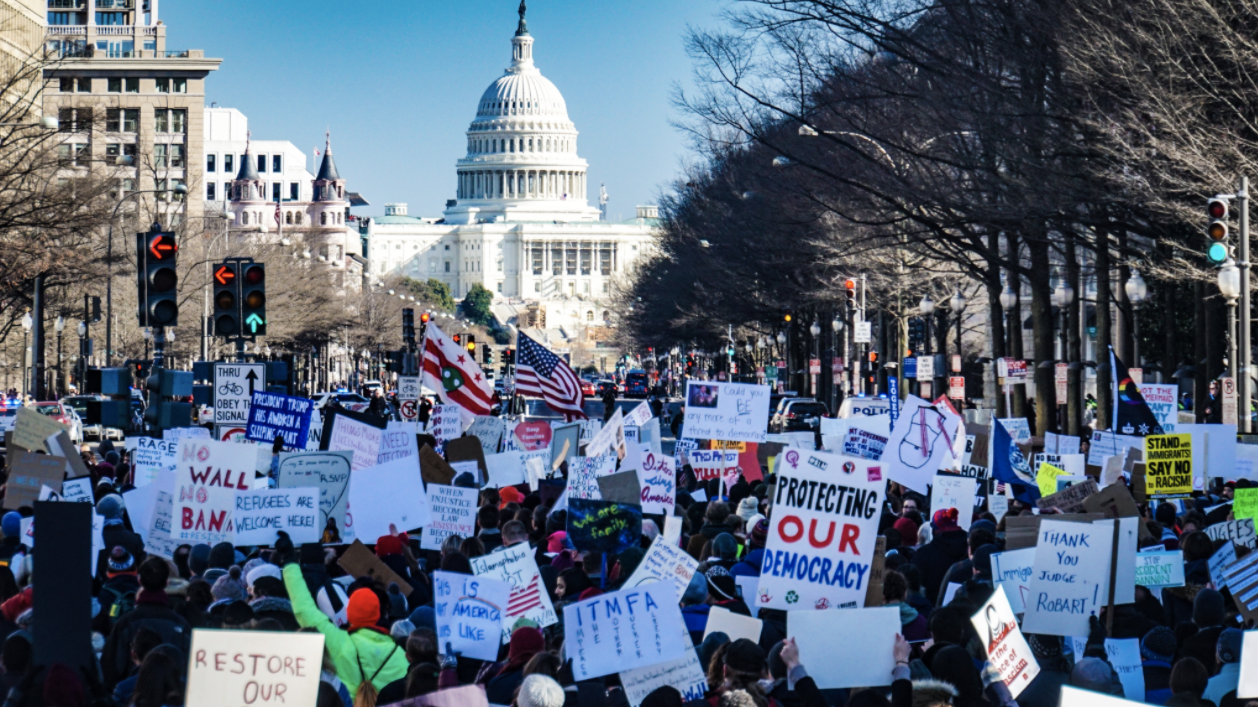
On October 12th, 2020 in Atlanta, Georgia, Johnta Austin tweeted about his eleven-hour wait to vote early in the Presidential Election. Austin’s experience was far from an isolated incident. Since early voting for the 2020 election began in mid-September the United States has been plagued with reports of long waiting times to vote in-person. This is symptomatic of the widespread disfunction – and systematic disruption – of the US voting system which has been occurring in recent years. Why is this occurring, and who is it affecting the most?
Voter suppression is defined as a strategy used to influence the outcome of an election by discouraging or preventing specific groups of people from voting. Dr. Carol Anderson of Emory University states that voter suppression is ‘lethal to American democracy.’ Long queues are just one symptom of voter suppression which is currently ongoing in the United States.
In 2013 the Republican-majority US Supreme Court decided that the 1976 Voting Rights Act was outdated. This act, previously, had identified states which had a history of discriminatory voter suppression and required them to gain federal approval before altering aspects of voting – such as Voter ID Laws and Poll Closures – to ensure that no discrimination was occurring. Almost immediately after the court’s decision discriminatory voting acts were passed in a variety of states. By striking down the act as unconstitutional the Supreme Court ‘gutted’ voting rights across the US.
Outdated Voting Equipment
Unlike the United Kingdom, the voting method of choice in the US is the voting machine. These electronically record and store the votes of citizens which allows for a faster count of votes and, arguably, is a simpler and more streamlined voting experience. However, these machines have made election day headlines on multiple occasions as they fail to properly perform their functions.
In 2012 life imitated art when a voting machine in Pennsylvania switched a vote from Obama to Romney, reminiscent of a sketch in The Simpsons. Again, in 2018, voters in Texas similarly reported machines that appeared to be switching their votes. With the majority of voting machines lacking connection to the internet, the accusation of hacking is unlikely to be well-founded. Instead, research suggests that the issue with voting machines instead lies in the length of time they have been in use.

In 2016 the Brennan Centre for Justice reported that 42 states were using machines which were more than a decade old for the Presidential election, with 14 of these states having at least some machines that were over 15 years old. Similar data can be seen in the figure above by ProPublica where the counties in pale green, in 2016, were using machines purchased in 2008 or prior. Malfunctioning machines have been reported to cause long lines to vote across numerous states, and the phenom of machines ‘changing votes’ can be attributed to calibration issues with old voting equipment.
Unpredictable waiting times mean that voting can be difficult to schedule around work and other commitments such as parenting. The effect of broken machines on the electorate is constantly being researched. Following the 2012 election, the Caltech/MIT Voting Technology Project, ‘Waiting in Line to Vote’, estimated that between 500,000 to 700,000 people did not vote due to long wait times at polling stations. The question to be asked is whether one particular group of the electorate is affected more than others.
Comparisons between polling locations reported to have long wait times in the Primary Presidential elections of this year and the percentage of non-white voters within the counties they served, the correlation is clear. People of Colour have been disproportionately affected by excessive queues for voting in recent elections.
Voter ID Laws
A total of 36 states request for voters to show identification at the polls. Of these, seven states are classified as having ‘strict’ laws. This means that only specific government-issued IDs are accepted in order for a citizen to cast their vote.
In England and Wales, around 76% of the population hold a UK passport and only 17% of the population holds no passport at all. In the United States, only 42% of citizens hold passports. While Voter ID laws are not present in the UK, this comparison demonstrates how possession of government ID is less common in the United States. More than 21 million Americans hold no form of government-issued photo ID.
The core issue with voter ID requirements is the costs associated with gaining ID. It is estimated that obtaining an ID in the US can cost between $75 to $175 dollars. This isolates lower-income Americans who lack the finances required for ID. Additionally, individuals with disabilities, the elderly, and low-income individuals can struggle to travel to ID offices which, in extreme cases, can be up to 170 miles away.
BAME voters are more likely to lack the ID necessary to vote. Across the US, 25% of voting age African-American citizens do not have a government-issued ID, in comparison to only 8% of whites. Additionally, a Caltech/MIT study found that minority voters are more likely to be questioned about ID than white voters.
Voter ID laws are the core example of how discriminatory voter suppression is being achieved in the US. Under the guise of the argument that such laws prevent voter fraud – which is a non-issue in the USA – these measures continue to be supported in legislatures across the country.
Polling Closures
Circling back to the symptom of long waiting times to vote brings up the issue of polling closures. Since the Supreme Court ruling in 2013, over 1,000 polling stations were closed, research in 2019 discovered. These closures were concentrated in Republican-led states with Texas, Arizona, and Georgia having the greatest number of closures.
Poll closures force individuals to travel further to vote and forces a greater number of individuals to vote in the same locations, leading to the queues experienced by Johnta Austin and many others. Decreased accessibility to voting reduces turnout, which is already chronically low in many of the states where poll closures have occurred in the highest frequency.
The closure of polls is not random. This legislation targets ethnic minority voters much like voter ID laws. When studying Poll closures in Texas, the University of Houston found that more voting locations were closed in Latinx neighborhoods than in non-Latinx ones. Ultimately this results in voters of these communities being more likely to see voting as inaccessible and their votes are lost.
Voter suppression is a complex and ongoing issue in the United States. It does not end with the areas addressed above; other methods include voter registration restrictions, voter purges, and felony disenfranchisement, to name a few. All of these methods aim to restrict ethnic minorities from casting votes across the United States.
After beginning in the Supreme Court, voter suppression continues in legislatures across the country and until recently has fallen under the radar of many voters. Coronavirus, which brought a focus onto the possibility of mail-in voting and increased early voting for the 2020 Presidential election campaign, changed this.
During the 2020 election campaign, President Trump suggested that widespread voter fraud would be the only reason for his potential loss of the election. Since taking office in 2016, the United States has become an increasingly hostile environment for minorities, and this stands true for voting rights. The unofficial disenfranchisement of US citizens has been consistent and unacceptable; however, it is finally being noticed.
The issue of voter suppression has been highlighted in the lead up to the 2020 election. In September 2020 Biden’s campaign began preparations for potential legal battles concerning voting issues in the election. Additionally, despite all the efforts against widespread voting, the 2020 election is predicted to have the highest voter turnout in the USA since 1908.
Voters across the US have already begun to wait in line, while socially distanced and wearing masks, to cast their vote following a politically divisive year. Voter suppression, it seems, has failed in many aspects to achieve what it intended. Instead of preventing electorate knowledge of voter suppression awareness has spread and led to what seems to be a renewed determination on behalf of the electorate.
Despite these positive developments, voter suppression is an issue that must urgently be legally remedied. Hope for this seems dashed after the passing of Ruth Bader Ginsburg as President Trump has nominated a Conservative replacement for her seat. With such voter suppression laws in place democracy in the US is being corrupted from the inside-out. The United States cannot continue to claim to be one of the greatest democracies in the world until it treats voting as an irremovable human right.
Written by Eloise Norris



Average Rating